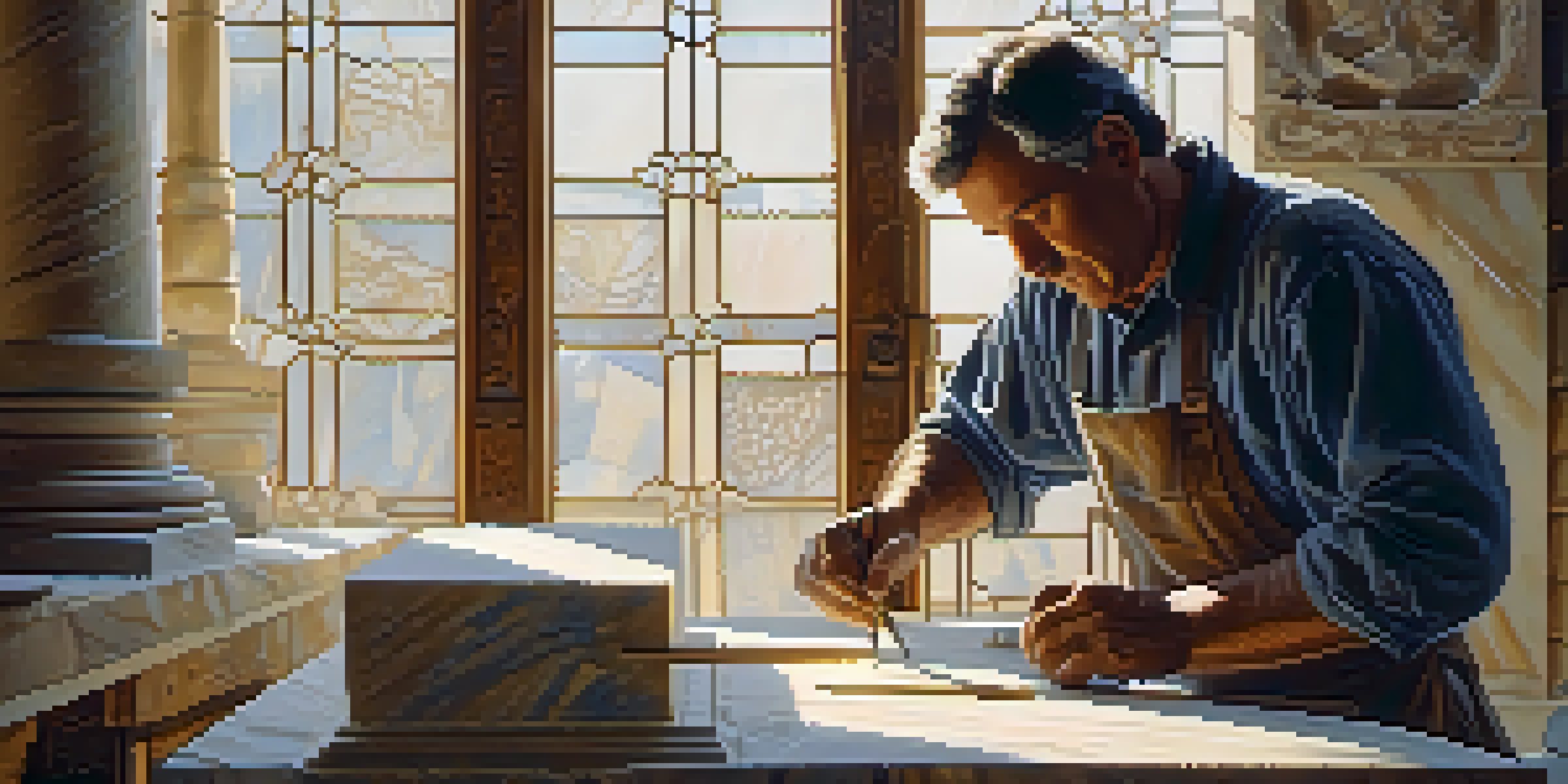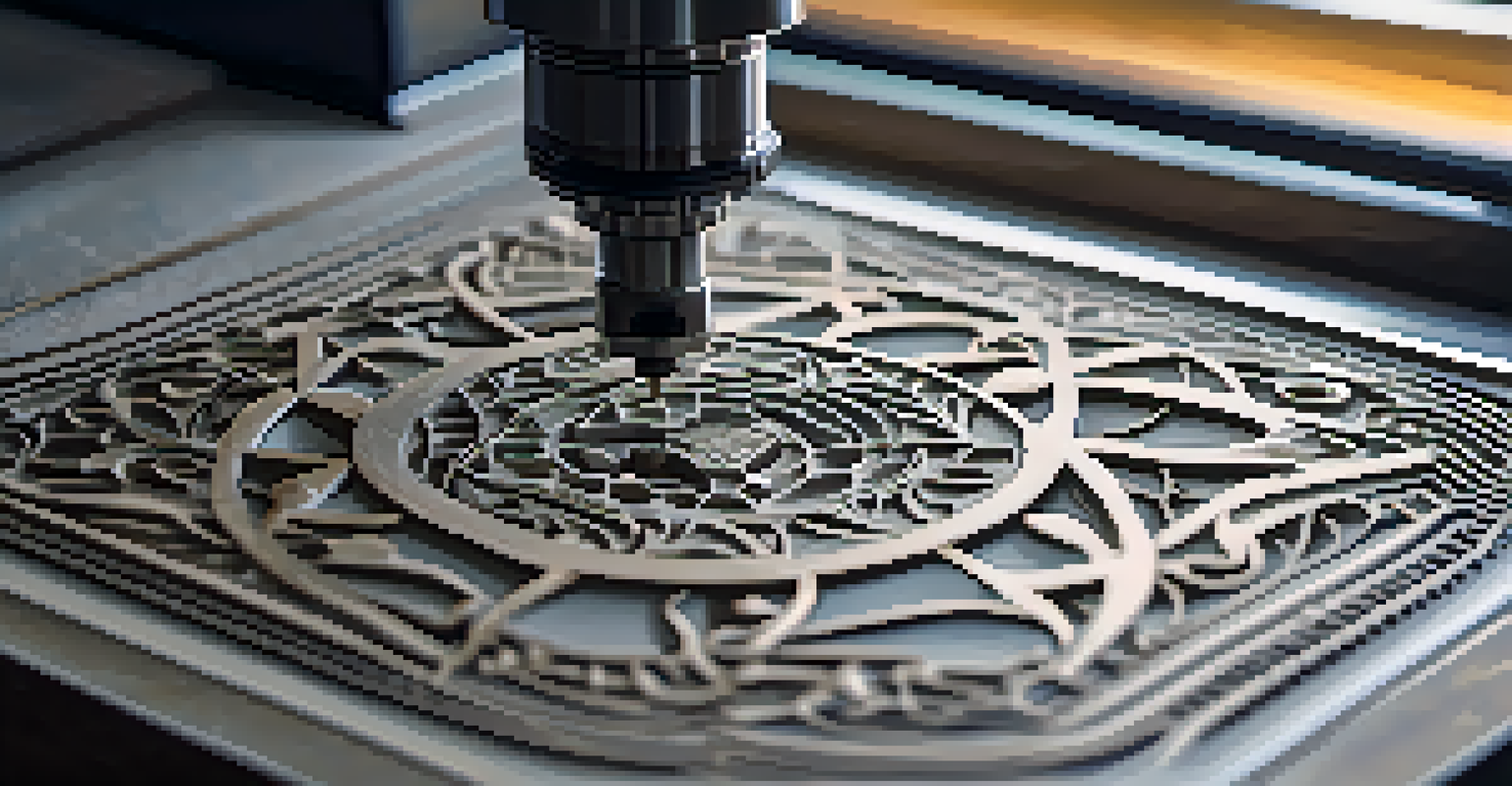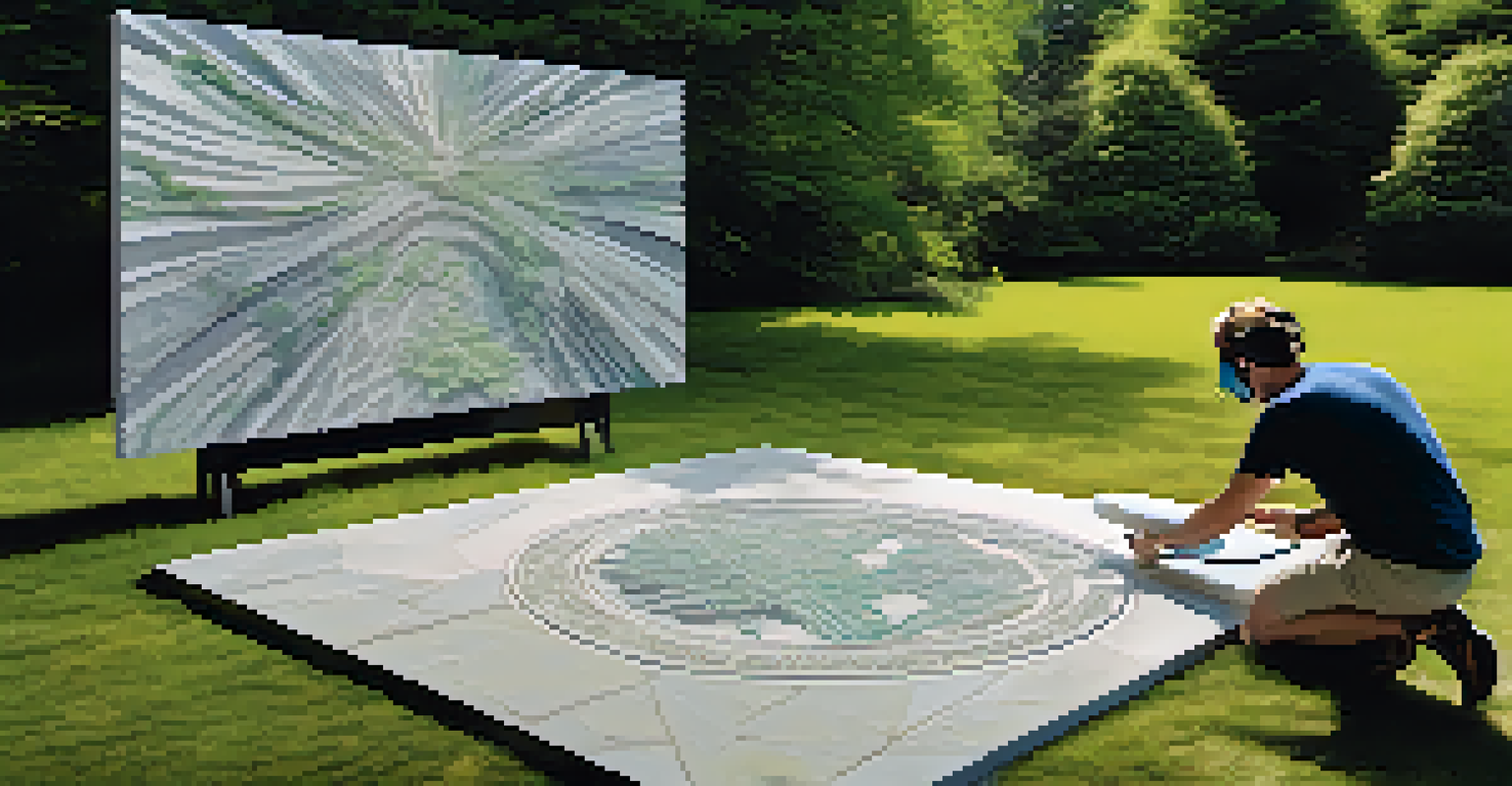Digital Tools Revolutionizing Stone Carving Artistry Today

The Ancient Art of Stone Carving Meets Technology
Stone carving is an ancient art form that has captivated artists for centuries. Traditionally, it involved chisels and hammers, requiring immense skill and patience. Today, digital tools are reshaping this craft, blending age-old techniques with modern technology to create stunning works of art.
Art is the most beautiful of all lies.
Artists can now use software to design intricate patterns and visualize their creations before they even touch the stone. This capability not only streamlines the creative process but also reduces the likelihood of costly mistakes. By marrying the tactile nature of stone with digital precision, artists are pushing the boundaries of what’s possible.
Moreover, this fusion of art and technology has made stone carving more accessible to new generations. Young artists, once daunted by the complexity of traditional methods, can now experiment and innovate, allowing the craft to evolve while honoring its rich heritage.
3D Modeling: A Game Changer for Carvers
One of the most significant advancements in stone carving is the introduction of 3D modeling software. Programs like Rhino and Blender allow artists to create detailed digital models, which serve as blueprints for their physical carvings. This technology simplifies complex designs, making it easier for artists to translate their visions into stone.

With 3D modeling, artists can manipulate shapes and forms in ways that were previously unimaginable. They can experiment with proportions, textures, and dimensions without the risk of damaging the stone. This flexibility opens up a world of creative possibilities, enabling artists to innovate and refine their work before the first chip is made.
Technology Transforms Stone Carving
Modern digital tools are blending traditional stone carving techniques with advanced technology, making the craft more accessible and innovative.
Additionally, 3D models can be shared and collaborated on easily, fostering a sense of community among artists. This collaborative spirit helps to inspire and motivate creators to push their skills further, as they learn from each other’s digital designs and techniques.
CNC Machines: Precision Carving Redefined
Computer Numerical Control (CNC) machines have revolutionized stone carving by offering unprecedented precision and efficiency. These machines can execute intricate designs with stunning accuracy, allowing artists to focus more on the creative aspects rather than the labor-intensive work. This has led to a surge in the complexity of carvings being produced today.
Technology is best when it brings people together.
Using a CNC machine, an artist can input their 3D model directly into the machine, which then carves the stone according to the specifications. This process not only saves time but also ensures that the final product matches the original design perfectly. For artists working on large projects or installations, this efficiency is invaluable.
Furthermore, CNC technology allows for repeated designs, enabling artists to create multiple pieces with the same level of quality and detail. This capability can significantly boost an artist's productivity, allowing them to explore new avenues of creativity without compromising on craftsmanship.
Laser Technology: Adding Detail with Ease
Laser technology is another groundbreaking tool in the realm of stone carving. With the ability to etch intricate details and patterns on stone surfaces, lasers enhance the artistic possibilities available to carvers. This technology allows for fine details that would be nearly impossible to achieve with traditional tools.
The precision of lasers means that artists can incorporate delicate designs into their work, enriching the visual appeal of their pieces. Whether it's adding a personalized touch to a sculpture or engraving intricate patterns, lasers provide an efficient way to enhance artistry without the extensive labor that traditional methods require.
3D Modeling Enhances Creativity
3D modeling software allows artists to visualize and manipulate designs, simplifying the carving process and expanding creative possibilities.
Moreover, laser engraving can be utilized in combination with other digital tools, creating a seamless workflow from design to execution. As artists become more familiar with these technologies, they can create truly unique pieces that stand out in the contemporary art scene.
Augmented Reality: Visualizing the Final Piece
Augmented reality (AR) is making waves in stone carving by allowing artists to visualize their work in real-time. By using AR applications, artists can overlay their digital designs onto a physical slab of stone, enabling them to see how their ideas will translate into the final piece. This innovative approach eliminates guesswork and enhances the artist's confidence in their design choices.
Imagine standing in front of a large block of stone, with your design projected onto its surface. This interactive experience allows artists to make adjustments on the fly, ensuring that every detail aligns perfectly with their vision. This capability not only saves time but also enhances creativity, as artists can experiment with different looks before committing to their carving.
As AR technology continues to advance, its integration into stone carving will likely become more sophisticated. Artists will have even more tools at their disposal, allowing them to push the limits of their creativity and produce striking works that captivate audiences.
Digital Scanning: Preserving History and Artistry
Digital scanning techniques are playing an essential role in preserving and replicating stone carvings. By creating detailed 3D scans of existing pieces, artists can ensure that historical works are not lost to time. This technology not only aids in preservation but also opens up opportunities for reproduction, allowing new generations to study and appreciate classic designs.
Once scanned, artists can manipulate the digital files to create variations or reinterpretations of the original work. This process fosters a dialogue between past and present, enabling artists to draw inspiration from history while infusing their unique styles and perspectives. It's a beautiful blend of tradition and innovation.
Future Innovations in Stone Art
Emerging technologies like AI and robotics promise to revolutionize stone carving, enhancing precision and opening new creative avenues for artists.
Additionally, digital scans can be used for educational purposes, allowing students and enthusiasts to explore intricate details of carvings that would otherwise be difficult to see up close. This accessibility enhances the appreciation of stone carving as an art form and encourages a deeper understanding of its techniques and history.
The Future of Stone Carving: A Digital Horizon
As technology continues to evolve, the future of stone carving looks incredibly promising. Digital tools are not only enhancing the capabilities of artists but also expanding the audience for this ancient craft. The combination of traditional methods with modern technology is breathing new life into the art form, making it relevant for contemporary audiences.
Emerging technologies like artificial intelligence and advanced robotics may further revolutionize how stone is carved. These innovations could introduce even greater precision and efficiency, allowing artists to create complex pieces that were once thought impossible. The potential for creativity is limitless, and artists are excited to explore these new frontiers.

With each advancement, the essence of stone carving remains, rooted in creativity and expression. As artists embrace these digital tools, they’re not just carving stone—they're carving out a new future for the art form, one that honors tradition while boldly stepping into the digital age.